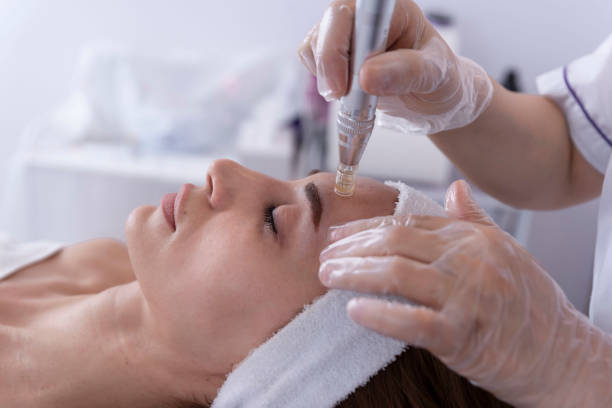In the world of non-invasive skincare treatments, microneedling has emerged as a remarkable technique for rejuvenating the skin and addressing various dermatological concerns. While the process may sound a bit intimidating—after all, it involves tiny needles—it’s essential to understand the science behind microneedling and how it works to deliver impressive results. In this article, we’ll delve into the science of microneedling and explore how it effectively rejuvenates your skin.
Microneedling: The Basics
Microneedling, also known as collagen induction therapy, is a minimally invasive procedure that uses a specialized device with fine, thin needles. These needles create controlled micro-injuries in the skin’s surface. While this might sound counterintuitive, these micro-injuries are precisely what stimulate the body’s natural healing processes, setting the stage for skin rejuvenation.
The Science Behind Microneedling
The remarkable effects of microneedling are rooted in the body’s innate healing and regenerative mechanisms. Here’s how it works:
- Micro-Injuries: When the microneedling device is applied to the skin, it creates tiny channels or micro-injuries. These injuries are so small that they are virtually invisible to the naked eye.
- Healing Response: The body recognizes these micro-injuries as a sign of tissue damage, even though the injuries are very superficial and controlled. In response, the body’s natural healing processes are activated.
- Collagen and Elastin Production: One of the key components of the skin that provides its structure and elasticity is collagen. As we age, collagen production decreases, leading to sagging and the formation of wrinkles. Microneedling prompts the body to produce more collagen, effectively replenishing this crucial protein.
- Elastin Production: Elastin is another essential protein that allows the skin to snap back into place when stretched. Microneedling also encourages the body to generate more elastin, contributing to the skin’s youthful elasticity.
- Improved Blood Flow: The micro-injuries created by microneedling stimulate blood flow to the treated area. This increased circulation helps deliver vital nutrients and oxygen to the skin, further supporting the healing process.
The Benefits of Microneedling
Understanding the science behind microneedling reveals why it has become such a popular treatment. Some of the key benefits include:
- Improved Skin Texture: Microneedling is particularly effective at improving skin texture. It can help reduce the appearance of fine lines, wrinkles, and acne scars, creating a smoother and more youthful complexion.
- Reduced Hyperpigmentation: Microneedling can address issues like hyperpigmentation, sunspots, and melasma by promoting a more even skin tone.
- Minimized Pore Size: Enlarged pores can make the skin appear rough and aged. Microneedling can help reduce pore size, resulting in a more refined complexion.
- No Downtime: Unlike more aggressive treatments, microneedling typically requires minimal downtime. Redness and swelling are common but usually subside within a day or two.
- Versatility: Microneedling can be performed on various areas of the body, making it effective for treating concerns like stretch marks and scars.
The Microneedling Process
The microneedling process typically involves the following steps:
- Consultation: A consultation with a skincare professional to discuss your goals, concerns, and expectations.
- Preparation: The skin is cleaned, and a topical numbing cream may be applied to ensure comfort during the procedure.
- Microneedling: The microneedling device is gently passed over the skin, creating micro-injuries. The depth of penetration and the number of passes will depend on your specific treatment plan.
- Post-Treatment Care: After the procedure, your skin may appear red and feel sensitive, similar to a sunburn. Your practitioner will provide post-treatment instructions to ensure a smooth and effective recovery.
- Results: While some results may be noticeable within a few weeks, the full benefits of microneedling often become more evident over several months as collagen production increases.
Conclusion
The science of microneedling unveils the incredible potential of this minimally invasive procedure for skin rejuvenation. By harnessing the body’s natural healing and regenerative abilities, microneedling effectively improves skin texture, reduces hyperpigmentation, minimizes pore size, and offers a more youthful appearance. If you’re considering microneedling as part of your skincare regimen, consult with a qualified skincare professional who can provide the expertise and guidance needed to embark on your journey to healthier, more radiant skin.












